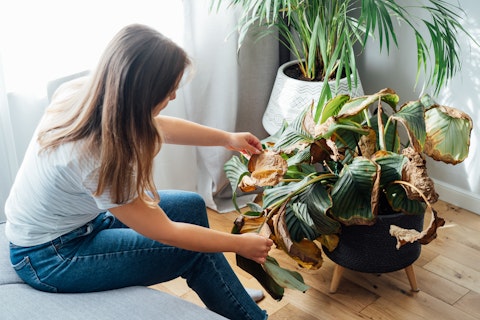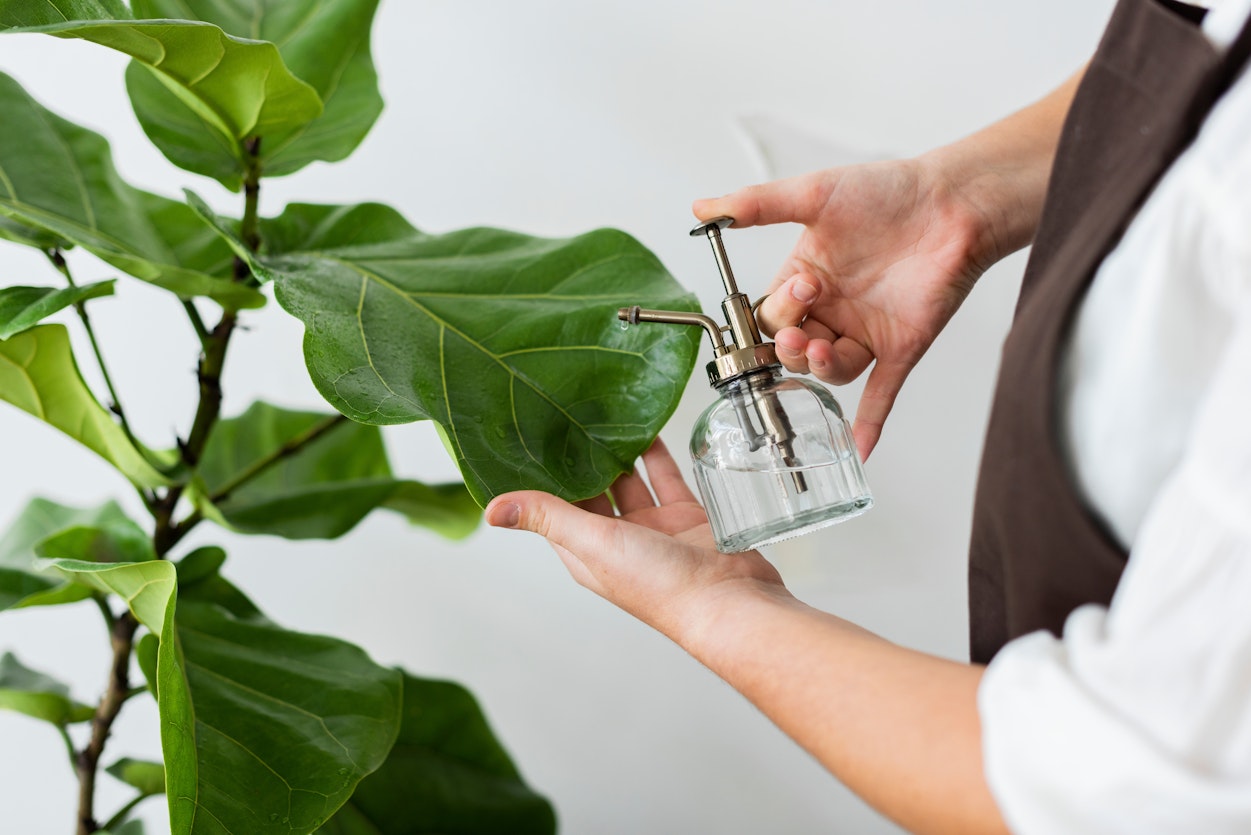
- Home
- Mist Busters - Should I Mist My Plants?

The Misting Myth
It is common to see articles on keeping tropical plants advising the misting of leaves to simulate their home environment, that is: spraying a light layer of water on their leaves to mimic humidity. This practice is widespread and heard more often than not. But is misting really worth your time? Let’s break it down.
Humidity
The majority of houseplants come from environments that favour a higher temperature all year round, so that they are mostly unaffected by the consistent temperature of the home in winter. Plants from sub-canopy temperate and tropical climates are usually the best suited to live in the home as a result. They favour a lack of wind, reduced sunlight and a fairly consistent temperature, all of which are reproducible in the home. In these tropical and subtropical climates, the temperature, moisture and density of forests usually traps lots of moisture in the air, meaning that these plants have also evolved to survive in conditions of high humidity.
Do I need humidity to keep my plants alive?
In short, no! Ideally, we would have a tropical rainforest set up in our homes to provide the best conditions for our plants, but our carpets, windowsills and wooden furniture would never forgive us! Ultimately, species of houseplants have been established as ‘able to survive in the home’ long before they reached our houses, and those that probably wouldn’t are likely harder to get hold of or in lower demand. Further, the average humidity in the British summer is about 50% anyway, which is a perfectly happy amount. For some plants, even higher humidity would produce great results and there are certainly solutions to this!
How do I increase my humidity?
Generally speaking, it's not the best idea. Higher residual humidity creates small pockets of space that are environmentally suitable for fungal and bacterial growth. Certain types of mould can release spores that are bad for your health. If you want more humidity in your home, it's best to do so in a contained or controlled area.
Terrarium: Terrariums, both sealed and semi sealed are a good way to cultivate plants that require higher levels of humidity. With fast draining soil, various moisture retaining substrates like clay pebbles and mosses and access to decent levels of light, the terrarium retains its own water cycle, trapping vapour inside itself and replicating a high humidity environment.
Humidifiers: Humidifiers are a great way to ensure humidity is under your control, however; keeping a humidifier in the house can lead to some of the issues mentioned above, so instead it is recommended to have it in a controlled area, like a metal cabinet. Otherwise, a humidifier alongside a hygrometer would allow you to make sure you’re not pushing your home past ideal conditions.
Plastic Cup method: For individual plants, keeping a clear plastic cup on top of the plant can help to simulate a little microclimate, trapping water vapour in the space above them and increasing the localised humidity. Remove the cup to water, and put it back on when finished, ensuring the plant stays at a stable temperature. This is commonly done for miniature orchids and carnivorous plants!
Avoid draughts: For a lot of plants, direct attention from a fan or a draughty window can quickly dry out leaves and cause the plant to suffer. This effect is seen in most plants that are in the direct line of a draught, as it carries the residual humidity away in the trajectory of its blowing. It doesn’t typically reduce the humidity of your home overall.
Should I mist my plants?:
Misting is the most commonly used humidity ‘solution’, but unfortunately, it demonstrates little merit.
The action of misting deposits tiny droplets of water on the surface of the plant, which at most lingers for 15 minutes before evaporating. Without containment, the evaporated water dissipates into the atmosphere and doesn’t achieve much, if any humidity in the space around the plant. In order for this method to be effective, the plant would have to be misted so often that at no point the leaves dry out, likely every 15 minutes to half an hour!
Short lived stagnant water on the surface of your plants can also encourage bacterial and fungal growth, as it creates beneficial environments for them, without actually benefiting your plants health.
It is much better to rely on the residual humidity of the air than to try and encourage more. Ironically, as the droplets evaporate they leave behind certain tap-water chemicals, that ultimately dry out the surface of your plant, or are subject to altering the temperature in small spots, which can shock or damage your plant over time.
What about pebble trays?:
Pebble trays are not much of a solution either, unfortunately. The idea is that keeping a tray of pebbles underneath a plant and wetting them allows vapour to slowly evaporate creating a humid microclimate around the plant. However, the evaporating water likely diffuses quickly, and in all directions, not actively altering the humidity of the space around your plant. Further, having a tray of stagnant water beneath your plants encourages the growth of lots of nasties, including mould, fungi, bacteria and flies, as well as inviting lots of nasty smells!
The takeaway:
It seems evident that humidity is not the absolute necessity that it is sometimes promoted to be. The residual humidity of a home is usually enough. However, in cases where it’s not, misting and pebble trays is certainly not the solution. At best, they will make absolutely no difference to your plants and waste your time! At worst: they can actually cause harm. There are a few things you can do instead if you are worried about humidity:
Know your plants: Try to identify and understand each plant you own upon purchasing. What does it need? Is it kept differently from my other plants? This way, if a plant does require higher levels of humidity you are aware of that.
Check the signs: So your leaves are browning. Are you sure this is a humidity issue? Check the soil, check for pests, check your light levels, check for a draught. Unless your home is particularly arid, or you have unknowingly purchased a plant which needs extra humidity, it is unlikely to be a factor in causing physical damage to a plant.
Get a hygrometer: A hygrometer can help measure the percentage of humidity in your home, and quell your worries if ever you have them! It can also help determine what the background humidity of your home is and you can choose your plants accordingly.
Jonathan Davies
Jonny has worked at Root since May 2023. His love for plants was inherited initially from his grandparents and parents, but really took off once he moved into his own place, where he started picking up small plants and was fascinated by watching how they grow and change over time. Jonny has a degree in Archaeology and Classics from the University of Sheffield, and a masters in Egyptology from Swansea University, where he primarily focused on garden culture in the ancient world, which he has managed to extend to a PhD thesis in the University of Liverpool, where he has been able to combine his love for plants with his love for ancient language and culture. Jonny loves being in the natural spaces around North Wales and Cheshire where he used to go growing up, and often spends hours examining the plants and trees, and kicking up the leaf litter searching for mushrooms and insects. He is fascinated most by plant biology, taxonomy and learning about ecosystems and interactions between plants and their environmental counterparts, and enjoys tending to his varied array of houseplants, and ongoing ‘plant projects’, such as growing plants from seeds and creating living epiphyte displays. Aside from his green thumb, his other interests include: art, reading, listening to and playing music in the company of his cats, Spooky and Boo.
More by Jonathan DaviesRelated Articles
View all articles
